O.S.S.
Brief Synopsis
Cast & Crew
Irving Pichel
Alan Ladd
Geraldine Fitzgerald
Patric Knowles
John Hoyt
Gloria Saunders
Film Details
Technical Specs

Synopsis
At an electronics plant in Baltimore, Maryland, secret agent John Martin attempts to steal plans for an electric circuit. Caught and arrested for espionage, Martin is turned over to the Office of Strategic Services, which is training a group of new recruits by sending them on test missions. Along with three other men with secret identities, Gates, Parker and Bernay, and one woman, Elaine Dupree, Martin is sent to France to blow up a railroad tunnel in order to paralyze Axis troops while Allied soldiers invade. Martin is dubious of Elaine's ability to work under pressure because she is a woman, but she insists that he treat her as he would any other agent. During the group's first assignment, at a rural French inn, Gates is killed by German agents. A meeting of the French resistance is interrupted by German colonel Paul Meister, who becomes immediately infatuated with Elaine. Elaine, a sculptor, sculpts a bust of Meister's head, and when he announces his departure for Normandy on a troop train, she begs him to take her with him. With Martin's help, Elaine makes a duplicate bust and fills it with plastic explosives. She and Martin then blow up the tunnel, and after Martin comes back for her as the Germans shoot at them, Elaine makes Martin promise never to jeopardize a mission in order to rescue her. On foot, they meet Bernay, who is their radio contact with O.S.S. officials. As the Allies break through at Normandy, Elaine and Martin make a deal with Amadeus Brink, an officer of the Gestapo, who hopes to secure his immunity and a small fortune. Brink removes Martin and Elaine's "wanted" file from the Gestapo sector headquarters and arranges for his cousin, a courier, to hand over a diplomatic pouch to Bernay for photocopying. Bernay places the negative in the lining of Martin's hat. Against Brink's advice, Bernay radios a final message that the Nazis have broken one of their secret codes. Bernay is gunned down, and Martin and Elaine are questioned by the gestapo and released before Meister catches Brink with their file papers. Martin and Elaine are about to board a plane to safety when they are asked to complete one last mission. They must contact Parker, who is on assignment near the Rhine. At a farmhouse, Elaine is accosted by a group of drunken German soldiers, and Parker, hiding among them, gives Elaine the Germans' troop dispositions. Martin leaves the farmhouse to radio in the positions, and while he is gone, Meister arrests Elaine. As the American troops march through France, Parker tells Martin that Elaine's real name was Ellen Rogers, and he imagines that she might have been the girl next door in his home town.

Director

Irving Pichel
Cast

Alan Ladd

Geraldine Fitzgerald
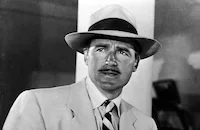
Patric Knowles

John Hoyt
Gloria Saunders
Richard Webb

Richard Benedict

Harold Vermilyea
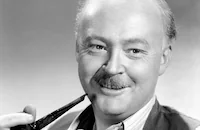
Don Beddoe

Onslow Stevens
Gavin Muir
Egon Brecher

Joseph Crehan

Bobby Driscoll
Julia Dean
Crane Whitley
Leslie Denison
Roberta Jonay
Jean Ruth
Frederick Voltz
Lawson Houghton

Harlan Warde
Fred Zendar
Paul Lees
William Meader
Albert Ruiz
Charles Victor
Catherine Craig
Albert Van Antwerp

Frank Ferguson
Murray F. Yeats
Edward Harvey
Pat Mcveigh
Tom Schamp
Walter Pietila

James Westerfield
Robert Wegner
Tom Stevenson
Verne Anders
Jimmie Dundee
Janna De Loos
Andre Charlot
Will Tunnis
George Sorel
Michael Brandon
Jean Del Val
Frank Dae
George Barton
Jean Ransome
Dorothy Barrett
Ed Kerr
Herbert Wyndham
Anthony Marsh
John Bogden
James Craven
Holger Bendixen
Carl Ekberg
Leo Schlesinger
Eric Steiner
Eddie Bauer
Walter Rode
Zane Megowan
Jack Sterling
Bob Templeton
Paul Stupin
Len Hendry
Frederick J. Waugh Jr.
Jerome Alden
Robert Cordell
Jack Lambert
Rene Dussaq
Ben Erway
George Bruggeman
Monica Folts
John Maxwell
Albert Petit
Paul Diamond
Carmen Beretta
Tony Merlo
Helen Chapman
Kathleen Terry
Philip Ahlm
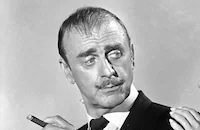
John Dehner
Edmund Porada
Jon Gilbreath
Henry Vroom
Peter Michael
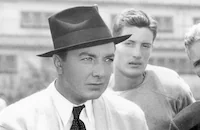
Fred Kohler Jr.
Joseph Granby
Edward Clark
Renee Randall
Louise Colombet
Major Fred Farrell
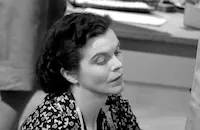
Dorothy Adams
John Harmon
Fred Nurney
Frank Pulliam Jr.
George Taylor
Hans Moebus
Dick Elmore
Gene Garrick
Henry Guttman
Paul Barrett
Jerry James
Byron Poindexter
James Andrews
Carl Saxe
Roger Creed
Carl Andre
Billy Lechner
Carl Russell
Fred Datig Jr.
Frank Chalfant
George Billings
Charles Ferguson
George Fannon
Billy Burt
Gus Taillon
Crew
Daniele Amfitheatrof
Lieutenant Raphaël G. Beugnon Aus
Edward Cohen
Sam Comer
John Cope
Major Robert M. Cordell Inf, Res.
Mary Kay Dodson
Haldane Douglas
Hans Dreier
Captain Rene Dussaq
Farciot Edouart
Csp(p) William D. Faralla Usnr
Constance Grant
Loyal Griggs
Captain Howard C. Haldecott Royal Artillery
Devereux Jennings
Gordon Jennings
Wallace Kelley
Paul Lerpae
Harold Lewis
Lionel Lindon
Richard Maibaum
Richard Maibaum
Captain Robert K. Osterman Inf. Res.
Lieutenant Vivienne Patterson Wac
Helen Gladys Percey
Colonel William C. Powers Usmc, Ret.
Captain Frank Pulliam Jr., Ac, Res.
William Rand
Irmin Roberts
Heinz Roemheld
Stanley J. Sawley
Commander John M. Shaheen Usnr
William Shea
Captain Frederick J. Waugh Jr., Aus
Wally Westmore
Philip G. Wisdom

Film Details
Technical Specs

Quotes
Trivia
Notes
The opening title card reads: "O.S.S., United States Government Office of Strategic Services, Washington, D.C." The foreword to the film states: "While the characters in this motion picture are fictitious, the story is based on a composite of actual incidents in the diversified activities of the United States Office of Strategic Services which conducted intelligence, special operations, and unorthodox methods of warfare in support of allied military operations. It is a tribute to the brave, resourceful men and women, living and dead, who volunteered for these dangerous assignments. [signed] William J. Donovan, Director of Strategic Services."
According to Paramount News items, before Paramount could make this film, the script had to be officially approved by Major-General Donovan, who organized the O.S.S. in 1942. Paramount News reported that with the cooperation of the U.S. government, O.S.S.'s declassified files were opened up for Paramount's inspection, and that many of the factual records were incorporated into the film's script. From hundreds of O.S.S. incidents, writer-producer Richard Maibaum, a former Lieutenant-Colonel in the U.S. Army, took three typical adventures and wove them into the screen story. Technical advisor Commander John M. Shaheen was the former chief of the special projects division of the O.S.S.
A news item in Paramount News states that ex-Army sergeant Edward Cohen, who painted portraits of American officers in Wiesbaden, Germany during the war, was commissioned to paint the oil paintings used in this film. Portions of the film were shot at California Institute of Technology in Pasadena, and on location in Palos Verdes, CA. The film marked the motion picture debut of stage actors John Hoyt, formerly known as John Hoysradt, and Harold Vermilyea. Paramount News also reported that one of Adolf Hitler's sleek black touring phaetons, a streamlined 1937 model Horch, was used in the film. Alan Ladd reprised his role in a Lux Radio Theatre broadcast on November 18, 1946, co-starring Veronica Lake.

Miscellaneous Notes
Released in United States on Video June 10, 1997
Released in United States Summer July 26, 1946
Released in United States on Video June 10, 1997
Released in United States Summer July 26, 1946











